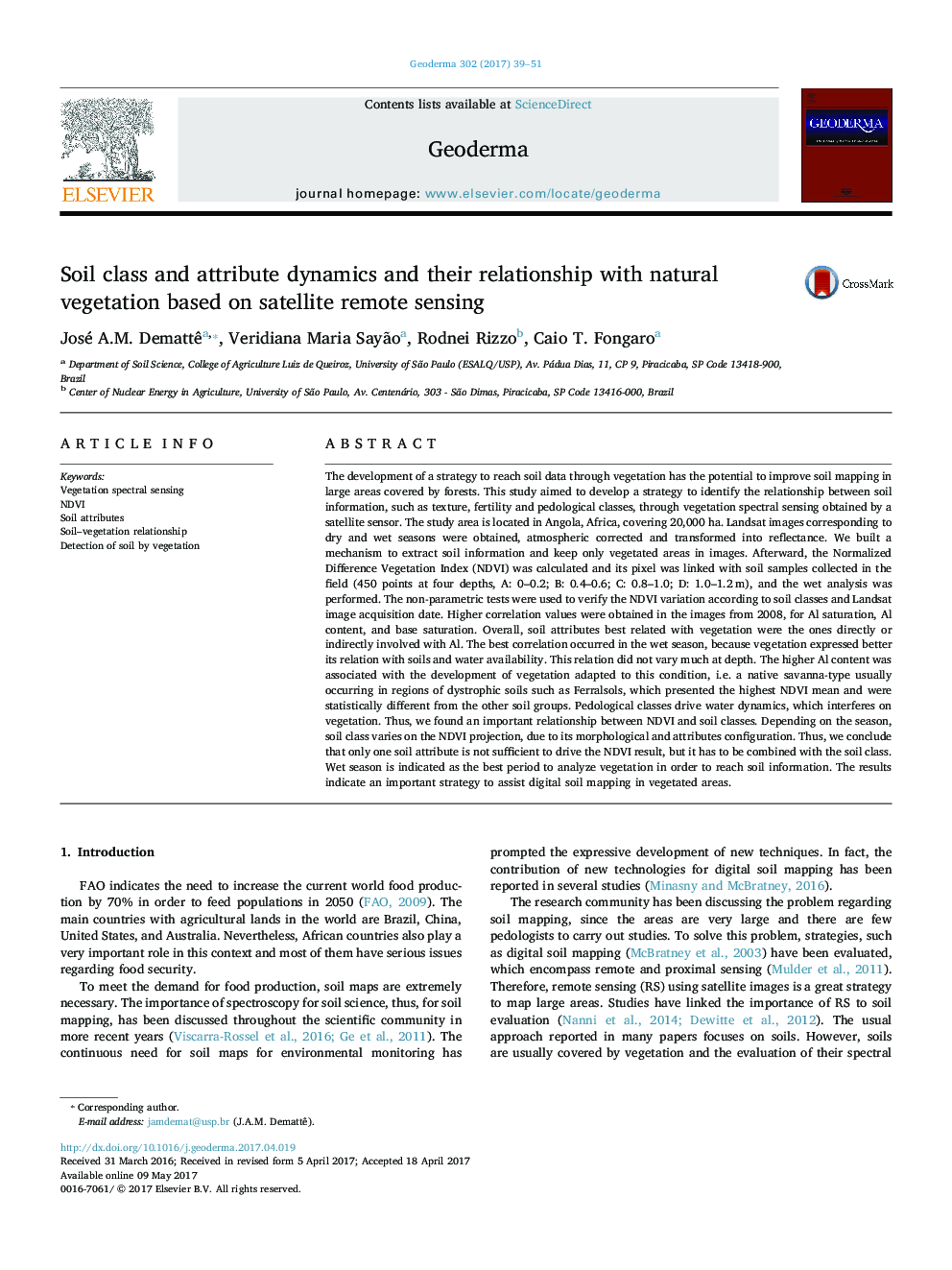| کد مقاله | کد نشریه | سال انتشار | مقاله انگلیسی | نسخه تمام متن |
|---|---|---|---|---|
| 5770259 | 1629415 | 2017 | 13 صفحه PDF | دانلود رایگان |
- Soil chemical attributes can be inferred by vegetation detected by satellite images.
- Soil chemical depth alteration imply on NDVI as characterized by Landsat images
- The correlation between soil class and NDVI is due to water and chemistry dynamics.
- NDVI can indicate soil attributes and characteristics related with classification.
- This method indicated the best season to study vegetation to reach soil information.
The development of a strategy to reach soil data through vegetation has the potential to improve soil mapping in large areas covered by forests. This study aimed to develop a strategy to identify the relationship between soil information, such as texture, fertility and pedological classes, through vegetation spectral sensing obtained by a satellite sensor. The study area is located in Angola, Africa, covering 20,000Â ha. Landsat images corresponding to dry and wet seasons were obtained, atmospheric corrected and transformed into reflectance. We built a mechanism to extract soil information and keep only vegetated areas in images. Afterward, the Normalized Difference Vegetation Index (NDVI) was calculated and its pixel was linked with soil samples collected in the field (450 points at four depths, A: 0-0.2; B: 0.4-0.6; C: 0.8-1.0; D: 1.0-1.2Â m), and the wet analysis was performed. The non-parametric tests were used to verify the NDVI variation according to soil classes and Landsat image acquisition date. Higher correlation values were obtained in the images from 2008, for Al saturation, Al content, and base saturation. Overall, soil attributes best related with vegetation were the ones directly or indirectly involved with Al. The best correlation occurred in the wet season, because vegetation expressed better its relation with soils and water availability. This relation did not vary much at depth. The higher Al content was associated with the development of vegetation adapted to this condition, i.e. a native savanna-type usually occurring in regions of dystrophic soils such as Ferralsols, which presented the highest NDVI mean and were statistically different from the other soil groups. Pedological classes drive water dynamics, which interferes on vegetation. Thus, we found an important relationship between NDVI and soil classes. Depending on the season, soil class varies on the NDVI projection, due to its morphological and attributes configuration. Thus, we conclude that only one soil attribute is not sufficient to drive the NDVI result, but it has to be combined with the soil class. Wet season is indicated as the best period to analyze vegetation in order to reach soil information. The results indicate an important strategy to assist digital soil mapping in vegetated areas.
Journal: Geoderma - Volume 302, 15 September 2017, Pages 39-51
